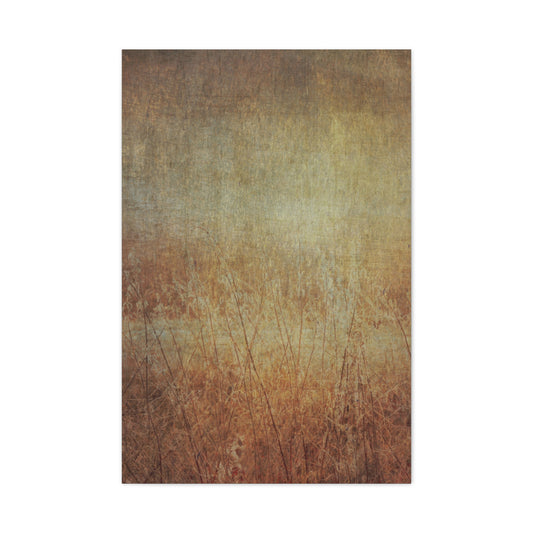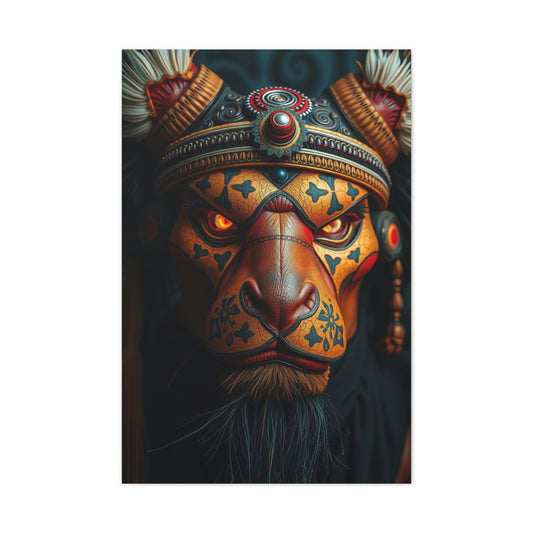The Cadmium Controversy: A Complex Debate in the Art World
The issue of cadmium in art materials has become a focal point of discussion within the creative community and beyond. What has now been referred to as the "Cadmium Crisis" was triggered by a viral blog post written by Michael Craine, a leading figure in the paint industry. This post quickly garnered widespread attention, sparking a flood of emails, social media posts, and tweets discussing the environmental and health concerns related to cadmium. The debate has escalated across various platforms, bringing together individuals from the fields of art, health, and environmental protection, all questioning whether artists should continue using cadmium-based pigments in their work.
For those unfamiliar with the subject, cadmium is a heavy metal that has been a staple in the creation of vibrant art pigments for many years. Colors like cadmium red, orange, and yellow are particularly valued for their intensity, brilliance, and permanence. These pigments have long been favored by artists for their unparalleled ability to maintain their hue and vibrancy over time. However, as with many industrial chemicals, cadmium is surrounded by concerns regarding its potential dangers to human health and the environment. Particularly in Europe, where regulations regarding toxic substances are more stringent, the use of cadmium has come under heavy scrutiny due to the possible long-term effects it could have on the ecosystem and individuals working with it.
The European Chemicals Agency (ECHA) has been instrumental in bringing attention to the issue through its REACH regulations, which are designed to safeguard human health and the environment from harmful chemicals. As part of these regulations, cadmium has been classified as a substance of concern, leading to calls for its removal from art supplies and other consumer products. Despite these concerns, many in the art community argue that the risks posed by cadmium in its pigment form are minimal when used responsibly. While cadmium is indeed toxic when exposed in large quantities or its raw state, the pigments used in art materials are typically stable and insoluble, which greatly reduces the potential for harm in their final form.
The European Union’s stance on cadmium is more nuanced than some critics would suggest. REACH regulations do not classify cadmium-based pigments as hazardous when they are contained within the paint, acknowledging that these pigments are stable and pose little to no risk to users when applied in their finished form. Even products that contain cadmium pigments, like cookware or ceramics, have been deemed safe for everyday use, as the cadmium is securely encapsulated within the glaze or surface. This level of security is one of the reasons why the art community continues to rely on these pigments despite growing concerns about their environmental impact.
The Environmental and Health Concerns of Cadmium in Art Materials
The primary concern surrounding cadmium lies in the potential risks associated with its mining, disposal, and long-term environmental impact. Critics argue that the environmental toll of extracting cadmium from the earth and disposing of it after use could have detrimental effects on ecosystems. The extraction process itself is energy-intensive and can result in the contamination of surrounding areas, while improper disposal of cadmium-based paints can contribute to soil and water pollution. These concerns have led many environmental organizations to call for the elimination of cadmium-based pigments from art materials, seeking safer and more sustainable alternatives.
Additionally, the potential health risks to artists and those who come into contact with cadmium-based pigments are a significant point of debate. Overexposure to cadmium can lead to serious health issues, including kidney damage, respiratory problems, and even cancer. While the pigments themselves are generally considered safe when handled properly and used in their final form, concerns remain about the long-term effects of repeated exposure, particularly in poorly ventilated studio environments or where safety precautions are not followed. This has prompted many to question whether the vibrant colors created by cadmium are worth the risk.
However, there is a significant counterpoint to this argument. As mentioned earlier, cadmium pigments are typically of low solubility, meaning that once they are incorporated into paint, they are unlikely to leach into the environment or pose a risk to the artist. The real concern, many argue, comes not from the finished product but from the potential hazards related to the manufacturing process and disposal of cadmium waste. Furthermore, some point out that other materials used in art, such as lead-based pigments or solvents, can also present risks if not handled properly. While the art world’s focus on cadmium is understandable, it may be more productive to address broader concerns about overall safety in the studio environment, rather than singling out a single pigment.
Despite these concerns, the artistic community has yet to find a viable replacement for the exceptional properties of cadmium pigments. Artists often cite the unique qualities that cadmium-based colors bring to their work, including their exceptional opacity, lightfastness, and tinting strength. These characteristics are difficult to replicate with other synthetic pigments, which often lack the same level of brilliance and durability. As a result, many artists are unwilling to abandon these pigments without a suitable alternative that meets the high standards required for professional work.
The Future of Cadmium Pigments in Art: A Delicate Balance
As the debate surrounding cadmium in art materials continues to evolve, the question of whether these pigments can be safely replaced remains a central issue. While there are growing calls for the development of alternative pigments that are both safer and environmentally friendly, there is a significant challenge in replicating the qualities of cadmium-based colors. Although some manufacturers have explored the use of non-toxic alternatives, such as organic pigments, these substitutes often fall short in terms of performance. The vibrant reds, oranges, and yellows created by cadmium pigments are nearly impossible to match, leaving artists with limited choices if they wish to avoid the use of cadmium altogether.
One of the key difficulties in replacing cadmium is the pigment's unique ability to withstand the test of time. Cadmium-based pigments are known for their exceptional lightfastness, meaning they do not fade or change in color when exposed to light over long periods. This makes them ideal for works that are meant to endure, such as paintings and murals that may last for decades or centuries. The durability and performance of cadmium pigments in these contexts are unmatched by many alternatives, which often require additional protection or maintenance to ensure longevity.
Despite the difficulties associated with finding suitable replacements, the push for safer and more sustainable art materials is gaining momentum. The rising demand for eco-friendly and non-toxic products across industries has led to innovation in the field of art supplies, with some companies investing in research to create safer alternatives. However, it is important to recognize that the shift toward greener art materials will require careful consideration and collaboration between artists, manufacturers, and environmentalists to ensure that new solutions do not compromise the integrity and quality of artistic expression.
The European Union’s position on cadmium-based pigments provides a balanced perspective in the ongoing conversation. While the REACH regulation does not consider cadmium pigments hazardous in their final form, it acknowledges the need for continued vigilance and research into safer alternatives. Ultimately, the future of cadmium pigments in art materials will depend on a delicate balance between the need for performance and the growing awareness of environmental and health concerns. It is clear that the conversation is far from over, and the art world will need to continue navigating these complex issues as it strives to find solutions that protect both creative expression and the planet.
As the conversation around cadmium intensifies, the question remains whether artists can truly replace the distinctive qualities of these pigments without compromising the beauty and longevity of their work. While alternatives may eventually emerge, it is unlikely that any substitute will match the unique performance characteristics of cadmium-based colors shortly. In the meantime, artists must weigh the potential risks against the creative benefits of using these pigments, continuing to work within the framework of available knowledge and materials, while remaining open to innovations that may arise in the future.
The Irreplaceable Quality of Cadmium Pigments in Art
Cadmium-based pigments have long been revered in the art world for their unrivaled qualities, offering a level of performance that many alternative pigments cannot replicate. While there has been growing concern about the environmental and health impacts of these pigments, it is important to recognize the reasons behind their continued popularity and their indispensable role in the palettes of professional artists. The powerful combination of opacity, lightfastness, and tinting strength that cadmium pigments provide makes them highly valued, and these qualities remain challenging to match with other materials.
Unmatched Opacity and Coverage
One of the key reasons cadmium pigments are so essential to artists is their extraordinary opacity. The opacity of a pigment refers to its ability to completely cover the surface of a canvas or paper without requiring multiple layers of paint. When an artist works with cadmium red or cadmium yellow, they benefit from a pigment with a unique chemical composition that gives it incredible coverage. This high opacity allows for the creation of vibrant, solid layers of color with minimal pigment use, offering a more efficient and cost-effective solution than many other colors. Cadmium’s ability to stand out without needing excessive layering or a heavy concentration of pigment is unmatched by many alternative options, making it a highly sought-after material for intricate works that demand clear and bold hues.
In comparison, many of the alternatives to cadmium fall short when it comes to opacity. While there have been attempts to develop substitutes that offer similar tones and intensity, none of them can quite match the richness of cadmium-based colors. For example, some substitutes, such as synthetic organic pigments, often lack the covering power necessary to achieve a similar effect, leading to a less vibrant and less versatile color payoff. This difference in opacity can limit the creative freedom of an artist, making it difficult to achieve the desired depth and intensity in their work. Opacity is essential for techniques that rely on strong, visible layers of color, such as glazing or impasto, where cadmium pigments shine.
Additionally, because alternative pigments lack the same opacity, they can require more layers to achieve comparable results. This not only increases the cost of materials but also consumes more time, making it a less efficient choice for professional artists who need high-quality pigments for both precision and longevity. Therefore, the distinctive opacity of cadmium pigments continues to make them a favored choice, especially in works that demand high color density and precision.
Longevity and Lightfastness: Ensuring Timeless Masterpieces
Another defining feature that makes cadmium pigments stand out is their exceptional lightfastness. Lightfastness refers to a pigment's ability to resist fading when exposed to prolonged light. This property is crucial for artists who want their works to endure over time, preserving the original vibrancy and hue for generations. Cadmium-based colors, such as cadmium red and cadmium yellow, are renowned for their remarkable resistance to fading under light, making them highly suitable for artworks that will be displayed in galleries, museums, or private collections.
Over time, many pigments, especially those of lesser quality, can lose their vibrancy due to the breakdown of their molecular structure when exposed to light. This fading can significantly alter the appearance of a piece, affecting the integrity of the artwork and the artist’s original vision. In contrast, cadmium pigments have a unique chemical stability that helps them retain their color integrity even in challenging conditions. Their superior lightfastness ensures that paintings remain as vivid as the day they were created, even after exposure to sunlight or artificial lighting for extended periods. For artists creating works intended to last for years, cadmium pigments provide a sense of security that alternatives simply cannot offer.
However, when we examine alternative pigments, it becomes evident that they often struggle to compete with cadmium's enduring strength. While some modern substitutes come close in hue and intensity, they frequently fall short when it comes to lightfastness. Certain synthetic pigments, although produced with safety and environmental concerns in mind, may begin to fade or change tone much more rapidly than cadmium-based colors. This discrepancy in lightfastness can be particularly troubling for artists working on long-term projects or creating pieces that are meant to withstand the test of time. For instance, lemon yellow substitutes may appear vibrant at first glance but will not retain the same level of intensity when exposed to light over the years.
Even though the art community has made strides in developing alternative pigments that prioritize environmental safety and toxicity reduction, these pigments often lack the longevity that professional artists rely on. The fading of colors due to poor lightfastness can not only alter the look of a painting but also affect the emotional and historical significance of the artwork. As a result, artists are still drawn to cadmium pigments because they provide peace of mind, knowing their works will remain as vivid as the day they were completed, regardless of exposure to light.
The Unique Tinting Strength of Cadmium Pigments
Another reason cadmium pigments continue to be a go-to choice for artists is their remarkable tinting strength. Tinting strength refers to the ability of a pigment to influence the color of a mixture when combined with other paints or mediums. Cadmium-based pigments, particularly cadmium red and cadmium yellow, are renowned for their powerful tinting strength, which allows artists to achieve a more precise and controlled color mixing experience.
Artists who require vibrant, rich hues in their color blends benefit from cadmium pigments’ ability to intensify and deepen the resulting mixtures without the need for excessive pigment. The robust tinting strength of cadmium makes it easier to create complex and nuanced color palettes, which is a vital tool in the arsenal of professional artists working in various media. Whether creating subtle transitions in a portrait or layering bold hues in a landscape, cadmium pigments provide unmatched flexibility and vibrancy.
In contrast, many alternatives to cadmium simply do not possess the same level of tinting strength. This can lead to less saturated and less vibrant colors, especially when blending or mixing with other pigments. While some newer pigments have been marketed as non-toxic and eco-friendly, their inability to match the tinting power of cadmium means that artists may need to rely on larger quantities of pigment or spend more time adjusting their mixtures to achieve the desired effect. This compromises the ability to work efficiently and effectively, which is why cadmium-based pigments remain a preferred option for those requiring the most potent and versatile colors in their work.
While other metal-based pigments like titanium and zinc are often used as replacements for cadmium, they also come with their own set of limitations. Titanium white, for example, is an excellent pigment in its own right but lacks the opacity and tinting strength of cadmium-based pigments. Similarly, zinc-based pigments, although perceived as less toxic, struggle with lightfastness and opacity compared to their cadmium counterparts. This makes them a less reliable choice for artists who need pigments that will not only deliver in the short term but maintain their quality over years of exposure.
In short, while the search for safer and more sustainable alternatives to cadmium pigments is ongoing, it is evident that these pigments provide certain qualities that are difficult, if not impossible, to replicate. The opacity, lightfastness, and tinting strength offered by cadmium pigments continue to make them indispensable tools for professional artists. As the art world continues to evolve, it is clear that cadmium pigments will remain a cornerstone of high-quality artistry, helping artists achieve the vibrant, durable, and complex works that are the hallmark of their craft.
Environmental Impact of Cadmium: An Ongoing Debate
The environmental implications of cadmium are undeniably a major focal point in the broader discussion about the material’s use, particularly when it comes to its mining, disposal, and its overall lifecycle. From extraction to eventual disposal, cadmium can pose considerable environmental challenges. The process of mining cadmium is energy-intensive and often results in pollution, especially in areas where environmental regulations may be lax or insufficiently enforced. The harmful environmental effects are not solely confined to the extraction process. Once cadmium-based materials, such as paints and pigments, reach the end of their useful life, improper disposal can result in contamination of vital natural resources like soil and water. This environmental impact becomes more pressing when considering the increasing global concern for sustainability and the reduction of hazardous waste.
The mining process itself is fraught with difficulties, as cadmium is typically extracted as a byproduct of zinc, lead, and copper mining. As these ores are unearthed and processed, cadmium is released into the surrounding ecosystem. Even with modern advancements in extraction technology, the process remains inherently damaging to the environment. Cadmium, being a highly toxic substance, tends to accumulate in the soil and water, which can lead to severe consequences for plant and animal life. Notably, the toxicity of cadmium makes it a dangerous pollutant, as it can enter the food chain through contaminated crops or water sources.
On the disposal front, cadmium-based materials, when discarded improperly, can continue to be a threat to the environment for years to come. Without proper handling, the pigments could leach into the environment, causing long-term contamination. This is particularly concerning in landfills, where waste materials containing cadmium can seep into the groundwater, affecting ecosystems and potentially human health. The recycling of cadmium has become a critical area of focus, as ensuring that cadmium-based products are correctly disposed of or repurposed can significantly reduce their environmental footprint. As environmental regulations continue to evolve, there is a growing emphasis on making the disposal process safer and more sustainable.
The Role of Cadmium in Art Materials: Low Risk in the Final Product
Despite its environmental and health concerns, it is crucial to understand the distinction between raw cadmium and the final, stable form in which it is used in art materials. When cadmium is incorporated into pigments, its harmful properties are largely neutralized due to the encapsulation process. The pigments used in art materials, such as paints and dyes, are stable compounds that, once processed and incorporated into their final form, pose minimal risk. The risks associated with cadmium in its pigment form are far less significant compared to the raw, unprocessed cadmium found in mining or during improper disposal.
When used as a pigment, cadmium is bound within a chemical matrix that prevents it from leaching into the environment. Artists who rely on cadmium-based paints for their vibrant colors and excellent performance benefit from the stable properties of these pigments. Cadmium pigments are known for their vivid reds, yellows, and oranges, and they have superior opacity and lightfastness, making them highly desirable in fine art and industrial applications. These benefits often outweigh the potential risks associated with the material, especially when proper safety measures are in place during production and application.
Furthermore, the risks posed by cadmium-based pigments are mitigated by the nature of their use. In contrast to the mining and manufacturing stages, where cadmium is more likely to be mishandled or improperly disposed of, artists typically use small amounts of cadmium pigments in controlled environments. The stable form of the pigment means that the material, once applied to a canvas or surface, is not a significant environmental or health hazard. Consequently, the focus has shifted from banning or restricting the use of cadmium pigments in art to finding ways to mitigate the environmental impact associated with the production and disposal of these materials.
A Path Towards Sustainable Cadmium Practices
As the conversation surrounding the environmental impact of cadmium continues to unfold, it becomes clear that a balanced approach is needed to address both the environmental concerns and the value that cadmium-based pigments bring to the art world. One promising solution lies in improving the sustainability of cadmium recycling processes and ensuring that cadmium pigments are effectively reused, reducing the need for new production and minimizing waste.
Many artists and manufacturers are increasingly aware of the need to handle cadmium-based materials responsibly. This awareness has sparked a shift in industry practices, with many companies now investing in more sustainable production techniques and offering recycling programs for cadmium-based products. In particular, there is growing interest in developing technologies that allow for the safe recycling of cadmium pigments. By focusing on the reuse of materials, it is possible to reduce the environmental impact of cadmium while maintaining the high quality and performance of the pigments.
Beyond the recycling efforts, there is also a need for more robust regulations surrounding the disposal of cadmium materials. Governments and regulatory bodies can play a critical role in ensuring that proper disposal methods are followed and that environmental risks are minimized. For example, implementing more stringent regulations on the disposal of hazardous materials could help reduce contamination in landfills and water sources. These regulations can also encourage manufacturers to develop safer, more environmentally friendly production methods for cadmium-based products.
An essential part of this process is fostering collaboration among artists, manufacturers, and regulatory bodies. As these stakeholders work together to develop solutions, they can ensure that the benefits of cadmium-based pigments are preserved while minimizing the potential negative environmental effects. This cooperative approach is key to finding long-term, sustainable solutions that balance the artistic value of cadmium with its environmental impact.
Moreover, there is room for innovation within the art community itself. Artists are beginning to explore alternatives to cadmium-based pigments without sacrificing color quality or performance. Natural pigments, for example, are being explored as a potential substitute. While these pigments may not offer the same vibrancy or durability as cadmium, they present a viable option for artists who are concerned about the environmental and health risks of using cadmium-based materials.
In addition to developing alternative materials, education is also playing a key role in reducing the environmental impact of cadmium. By providing artists with information on proper handling, disposal, and recycling practices, the art community can help mitigate the risks associated with cadmium pigments. For instance, offering workshops and resources on environmentally responsible studio practices can empower artists to make more sustainable choices. These efforts, combined with the advancements in recycling technology and regulatory policies, offer a promising pathway towards a more sustainable future for both the environment and the art world.
The Future of Cadmium in Art Materials: Navigating Environmental Concerns and Artistic Needs
As artists and environmentalists continue to explore the intersection of creativity and sustainability, the future of cadmium pigments in art materials remains uncertain. Historically prized for their vibrant colors, cadmium-based pigments have become increasingly controversial due to their potential environmental and health risks. Regulatory bodies around the world are putting pressure on manufacturers and artists alike to reconsider their use. Yet, despite these challenges, cadmium continues to be a staple in the art world for its unmatched properties. So, what lies ahead for these powerful pigments as artists, scientists, and industry professionals search for a balanced solution?
The Growing Push for Alternatives
The demand for eco-friendly alternatives to cadmium pigments is steadily increasing. With heightened awareness of environmental concerns, regulatory agencies and environmental advocacy groups are tightening regulations on the production and use of toxic substances. For many artists and consumers, the message is clear: the art industry must find sustainable options that reduce harmful environmental impacts. Several countries have already implemented or are working toward stricter regulations on cadmium, prompting manufacturers to seek out safer, more environmentally friendly pigment options.
At the same time, societal shifts toward greener practices in art supply production reflect the growing concern about the environmental impact of manufacturing processes. Companies are working tirelessly to create new, non-toxic alternatives to cadmium-based paints that offer the same brilliance and longevity as their traditional counterparts. These substitutes are expected to meet the same high standards of quality that artists demand in their work. However, transitioning to these alternatives won't be an easy feat. Many artists are understandably reluctant to switch, fearing that new materials might compromise the intensity, color range, and durability that cadmium pigments offer. Such concerns are important because, for artists, the integrity of their craft is essential, and the fear of sacrificing artistic quality for environmental concerns is a valid one.
Despite these obstacles, the pressure to find viable alternatives continues to mount. As manufacturers respond to both regulatory pressures and changing consumer preferences, it is likely that we will see an influx of new pigment technologies. These innovations may take various forms, from lab-developed synthetic pigments to natural, plant-based alternatives. However, the key challenge will be ensuring that these new options meet the stringent artistic standards established by the legacy of cadmium pigments.
Innovation in Safer and Sustainable Pigments
While the demand for alternative pigments grows, scientific advancements offer promising solutions for the future of art materials. Researchers and pigment manufacturers are working diligently to develop new pigment formulations that retain the vibrant hues and durability of cadmium but with less environmental harm. Some companies have already made strides in creating cadmium-free options that promise to replicate the performance of traditional cadmium paints.
One of the most promising areas of innovation is in the realm of synthetic pigments. These new, advanced pigments are designed to match the qualities of cadmium pigments without the toxicity. For instance, pigments like cadmium-free red, orange, and yellow alternatives have been successfully formulated, creating a potential game-changer for artists who rely on the rich, warm tones that cadmium colors provide. These alternatives often make use of cutting-edge technology, ensuring that they offer the same level of color intensity and permanence as cadmium, while minimizing the environmental footprint.
In addition to synthetic pigment development, some manufacturers are also exploring the possibility of using naturally occurring minerals and plant-based materials to create eco-friendly alternatives. By turning to nature for inspiration, these new pigments could offer a safer and more sustainable solution. While these natural alternatives might not yet offer the same depth and range as cadmium, their development is still in its early stages, and progress is being made. In time, it is possible that nature-based pigments could provide a viable and attractive alternative for environmentally conscious artists.
Striking a Balance Between Art and the Environment
The dialogue surrounding cadmium’s environmental impact is undeniably multifaceted, and it requires a nuanced approach. On one hand, there are valid concerns about the toxic nature of cadmium in its extraction, usage, and disposal phases. On the other hand, the exceptional properties that cadmium-based pigments provide to artists rich colors, permanence, and versatility cannot be overlooked. The challenge lies not in eliminating cadmium from the art world but in finding a middle ground that addresses both environmental concerns and the creative needs of artists.
Historically, cadmium-based pigments have been favored in fine art for their brilliance and permanence. Colors like cadmium yellow, red, and orange are prized for their intensity and resistance to fading, which makes them a key component in the creation of masterpieces that stand the test of time. From the earliest use of cadmium in paints, artists have appreciated its qualities, yet the environmental implications must be considered in modern practice.
One of the most pressing concerns in using cadmium is the mining process, which can have devastating effects on local ecosystems and human health. The extraction of cadmium, a by-product of mining for other metals like zinc, can lead to the contamination of surrounding environments if not carefully managed. Furthermore, during disposal, improper handling of cadmium-based art materials can result in toxic runoff and soil contamination. These risks demand that both artists and manufacturers adopt responsible approaches when dealing with cadmium-laden materials.
Fortunately, advancements in both technology and environmental regulation have made it increasingly feasible to mitigate these risks. For example, many companies are now focused on improving mining techniques to reduce environmental impact. Innovations in recycling technology have also made it possible to reclaim cadmium from used materials, minimizing the need for new extraction. These technological advances, coupled with a more robust regulatory framework surrounding cadmium use and disposal, provide a pathway toward more sustainable practices in the art world.
The key to reducing the environmental impact of cadmium is to focus on responsible production and consumption practices. For instance, artists and manufacturers can invest in alternative materials, such as synthetic or organic pigments, that mimic the qualities of cadmium without the associated environmental risks. This not only provides a sustainable alternative but also encourages innovation within the industry. However, until these alternatives can fully replicate the properties of cadmium, a careful balance must be struck between using cadmium-based pigments and embracing eco-friendly practices.
In addition to this, awareness plays a crucial role in minimizing harm. Artists, curators, and consumers need to be educated on the potential risks associated with cadmium pigments, as well as on the proper disposal methods and recycling initiatives available. By ensuring that cadmium-containing art materials are disposed of correctly and encouraging recycling initiatives, the art world can play its part in safeguarding the environment.
Artists themselves can adopt more sustainable practices in their creative processes. For example, when selecting art supplies, they can choose products from manufacturers that emphasize sustainability and ethical sourcing. As artists continue to experiment with new materials and technologies, they must remain conscious of the environmental footprint their materials leave behind. Collaborations between artists, environmentalists, and scientists are necessary to drive these innovations forward, ensuring that the creative freedom of artists is not compromised while safeguarding the planet.
The role of art institutions in this process should also be considered. Galleries, museums, and educational institutions can help shape the future of the art world by encouraging sustainable practices and promoting awareness. By fostering dialogue around the environmental implications of materials used in art, these institutions can guide the next generation of artists toward more eco-conscious practices.
Ultimately, the use of cadmium in art materials is not a black-and-white issue. It involves a careful consideration of the benefits and risks associated with these pigments, as well as a commitment to finding solutions that benefit both artists and the environment. Through a combination of technological innovation, responsible production and disposal practices, and increased awareness, a more sustainable future for cadmium in the world of art is not only possible but within reach. By striking a balance between creative expression and environmental stewardship, we can ensure that art continues to thrive without compromising the health of our planet.
The Way Forward: A Harmonious Integration of Innovation and Tradition
As we look to the future of cadmium in art materials, it is clear that the art world is at a crossroads. On one hand, the pressure to reduce the environmental impact of art supplies is undeniable, and it is encouraging to see the development of safer and more sustainable alternatives. On the other hand, the unique characteristics of cadmium pigments make them difficult to replace, and many artists may resist moving away from a material they trust and rely on.
The future of cadmium pigments will likely be shaped by the ongoing efforts of artists, scientists, and manufacturers to find a middle ground. Advances in technology may provide the answer, offering alternatives that maintain the high artistic standards that cadmium has long provided while reducing its environmental impact. For now, cadmium pigments will continue to play a significant role in the creative process. Still, the art world will need to balance environmental concerns with the practical needs of artists to create a sustainable and vibrant future for art materials.
Ultimately, the future of cadmium in art materials depends on the industry’s ability to innovate without compromising the artistic experience. It will be a delicate process, one that requires collaboration and open-mindedness from all involved. As new pigments are developed and tested, artists will undoubtedly find ways to incorporate them into their work, ensuring that the evolution of art materials reflects both creativity and responsibility. As technology advances and new solutions emerge, the art world can look forward to a future where the integrity of the craft and environmental sustainability are no longer opposing forces, but rather, complementary elements of the same artistic vision.




























